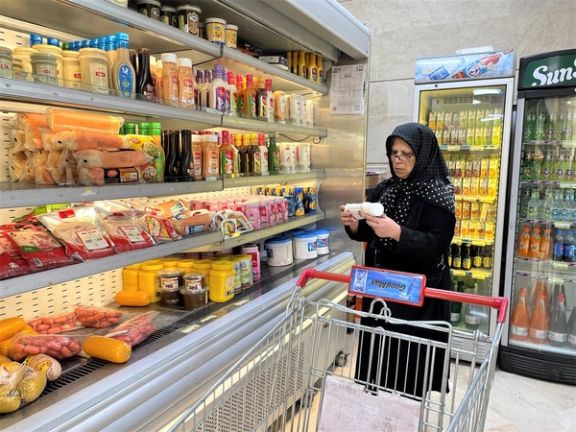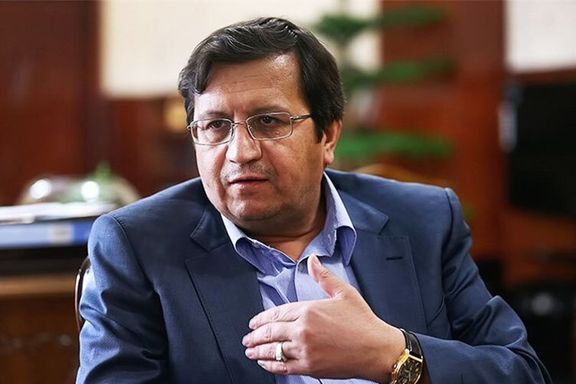Iran's Inflation Soars To Two-Year High Amid Failed Policies

The inflation rate in the past Iranian month was its highest in two years as the government grappling with large budget deficits continues to print money.

The inflation rate in the past Iranian month was its highest in two years as the government grappling with large budget deficits continues to print money.
According to the latest data released by the Central Bank of Iran (CBI), the inflation rate in the country has surged to its highest level in the past 22 months, hitting 54.8% for the month of Mehr (ended October 22), economic website EcoIran reported, after analyzing data released by the CBI. The central bank rejected the report as false, insisting that the inflation is about 45 percent. It claimed that there were discrepancies in calculations.
EcoIran says the number is based on the Central Bank's tables, which are presented periodically to the judiciary to calculate overdue debts, fines, and dowries. The CBI rejected EcoIran’s figure as “wrong” but did not elaborate on the table presented in its document.
The Statistics Center of Iran (SCI) and the CBI claim that the rate of annual inflation has dropped to 45.5 percent, nearly the same level as a year ago, but some things cannot be denied via changing technical definitions. Food prices have risen much faster than the official inflation rate, in some instances hitting 100-percent in 2022. ILNA news agency reported this week that the decline in people's purchasing power is so steep that some workers are surviving the second half of the month with just eating "one egg a day."
The central bank and the ministry of the economy stopped issuing regular and precise economic data in 2019 as US sanctions imposed the previous year pushed an already struggling economy into a deep recession. In the absence of credible data by the Central Bank of Iran about inflation, Iran's Statistics Center became the primary official entity announcing these figures. Government officials and the central bank usually announce lower inflation figures for consumer goods.

Iran’s former chief banker Abdolnaser Hemmati, an outspoken critic of the current administration’s economic policies, said Wednesday that the government has failed to control inflation or the devaluation of the rial. He said that the measures the Raisi’s administration has taken to control the economy has led to “an economic repression and more rente in the currency market," a French term used in Persian to imply privileges resulting from undue influence.
The currency has lost its value 12-fold since 2018 when the United States withdrew from the JCPOA nuclear accord and imposed sanctions. The rial has also lost about 80 percent of its value compared to mid-2021 and close to 50 percent since December 2021.
The government is desperate to control the currency market hoping that it can artificially keep the Iranian rial high. It created multiple exchange rates for rial against the dollar and other foreign currencies, providing subsidies – or cheaper dollars – for the import of essential items. However, the system is manipulated by regime insiders or businesspeople with government connections.
Hemmati said that during the past seven months (since the start of the Iranian year in March) the CBI has supplied $20 billion via a special currency scheme known as NIMA. Exporters have to bring back hard currencies they earn to Iran and sell it at a cheaper rate to the government, which then makes it available to importers at less than than the market exchange rate. He elaborated that the 30-percent discount on the exchange rate provided in NIMA has amounted to an equivalent of $4.4 billion, claiming that about 50 to 100 percent of this amount is pocketed by intermediaries or importers with close links to the regime.
Mohammad Aram, the Deputy for Foreign Exchange at the Central Bank, announced earlier in the week that a total of $42 billion has been provided since March, a three-percent rise in comparison to the corresponding period last year. According to him, the Ministry of Industry, Mining, and Trade received $26.6 billion, the Agriculture Ministry received $10.4 billion, and the Health Ministry received $2.7 billion for importing their needs.
The US dollar is set at 285,000 to the rial in the special government scheme versus the free market where it is traded at about 510,000. The discrepancy between the two breeds corruption, as well-connected individuals and companies can buy cheap dollars through NIMA and instead of using it to finance imports, sell it on the currency market.
Numerous cases of such corruption have been revealed since 2018. The government also regularly sells dollars through the free market to currency dealers to support the beleaguered rial. Usually, these interventions have a limited and temporary effect.
Donya-e-Eqtesad, Iran’s most popular economic newspaper highlighted the paradox this week that the government is providing more foreign currency for the import of essential goods, but they are growing increasingly scarce in the market.